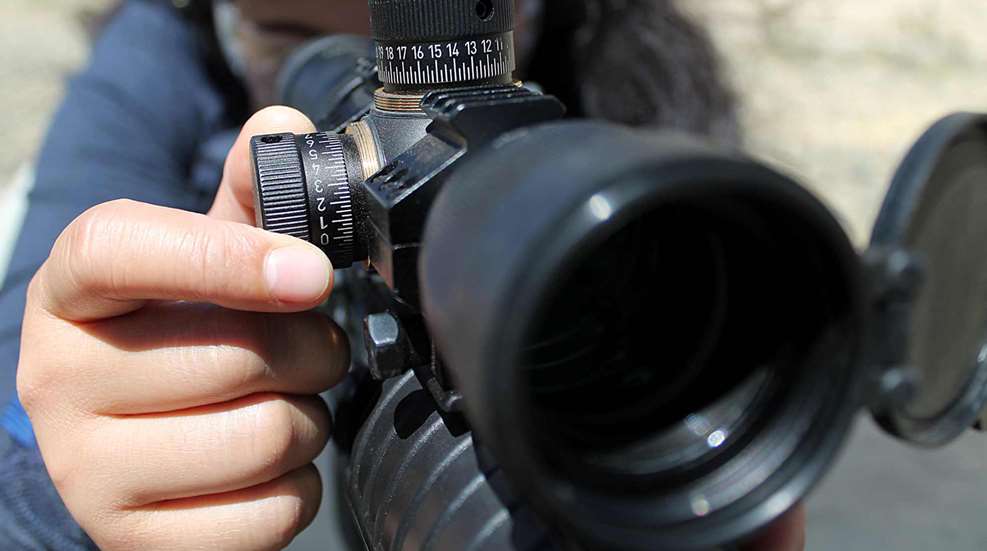
The 2016 High Power rule change permitting optics for Service Rifle competition opened a new niche market for rifle scope manufacturers, and Hi-Lux Precision Optics has been one of the first to throw a hat into the ring with a dedicated offering. The XTC 1-4x34 mm features parallax adjustment specific to High Power shooting distances, finger adjustable turrets and a reticle designed precisely for NRA High Power targets.
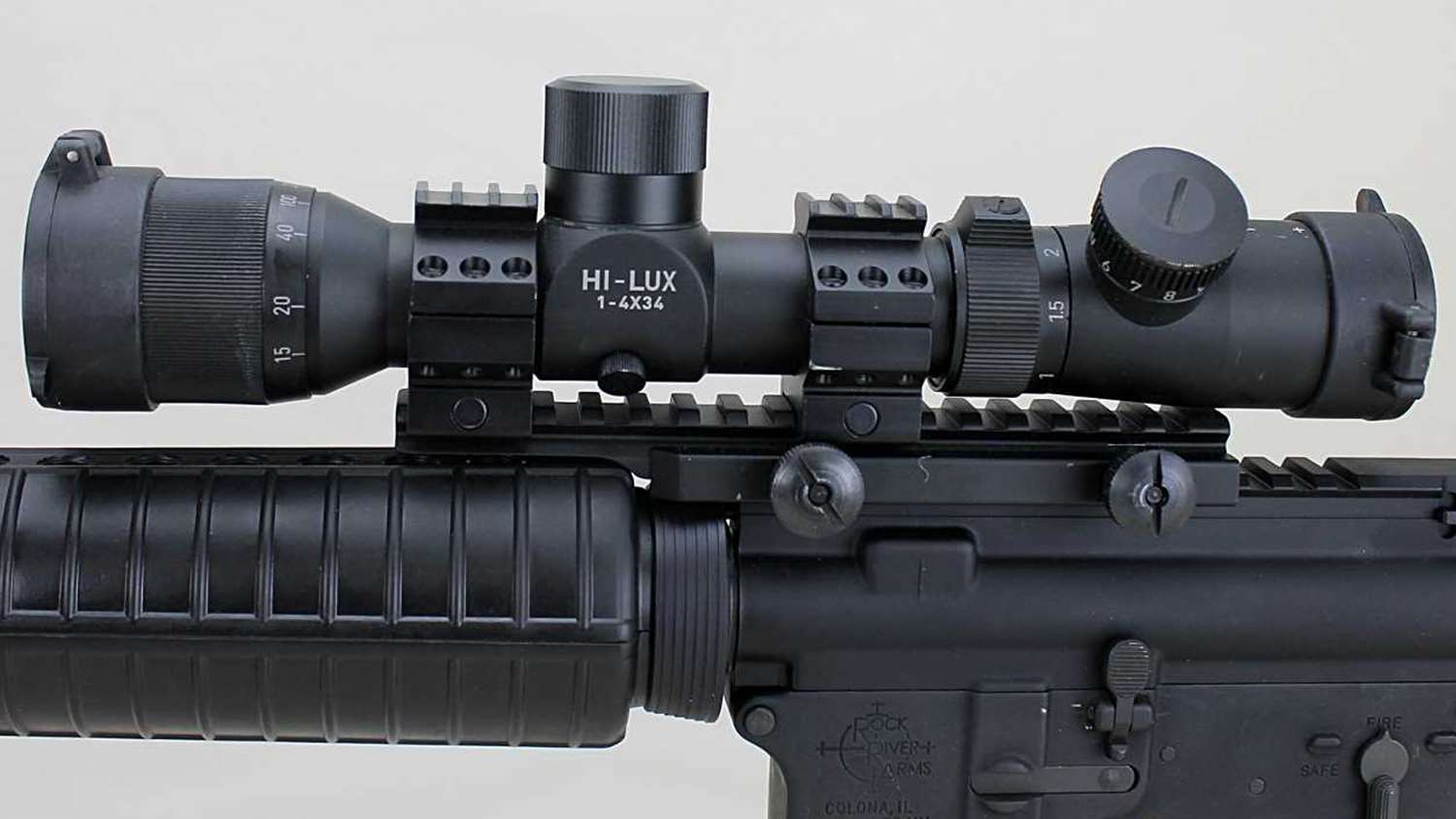
Shooting Sports USA ran the Hi-Lux XTC through a Spring 2018 season of High Power shooting, which was as much a learning process in changing over from iron sights to a scope as it was a review of the XTC itself. Here’s what we discovered.
Reticle design
Taking that last point first, the reticle design is the most obvious feature that dedicates the Hi-Lux XTC to High Power competition. Three stadia taper from left, right and bottom toward the scope center where a semicircular “horseshoe” surrounds a small cross. Hi-Lux says the horseshoe inside diameter is 10 MOA, but it appears to actually be smaller than that because the aiming black, which is about 6 MOA across at each distance, nestles comfortably inside the horseshoe to present a sight picture somewhat like that on a match rifle sporting front and rear aperture sights. The small cross in the reticle center measures 5 MOA wide by 5 MOA tall. In practice, the four tips of the cross almost exactly subtend the aiming black.
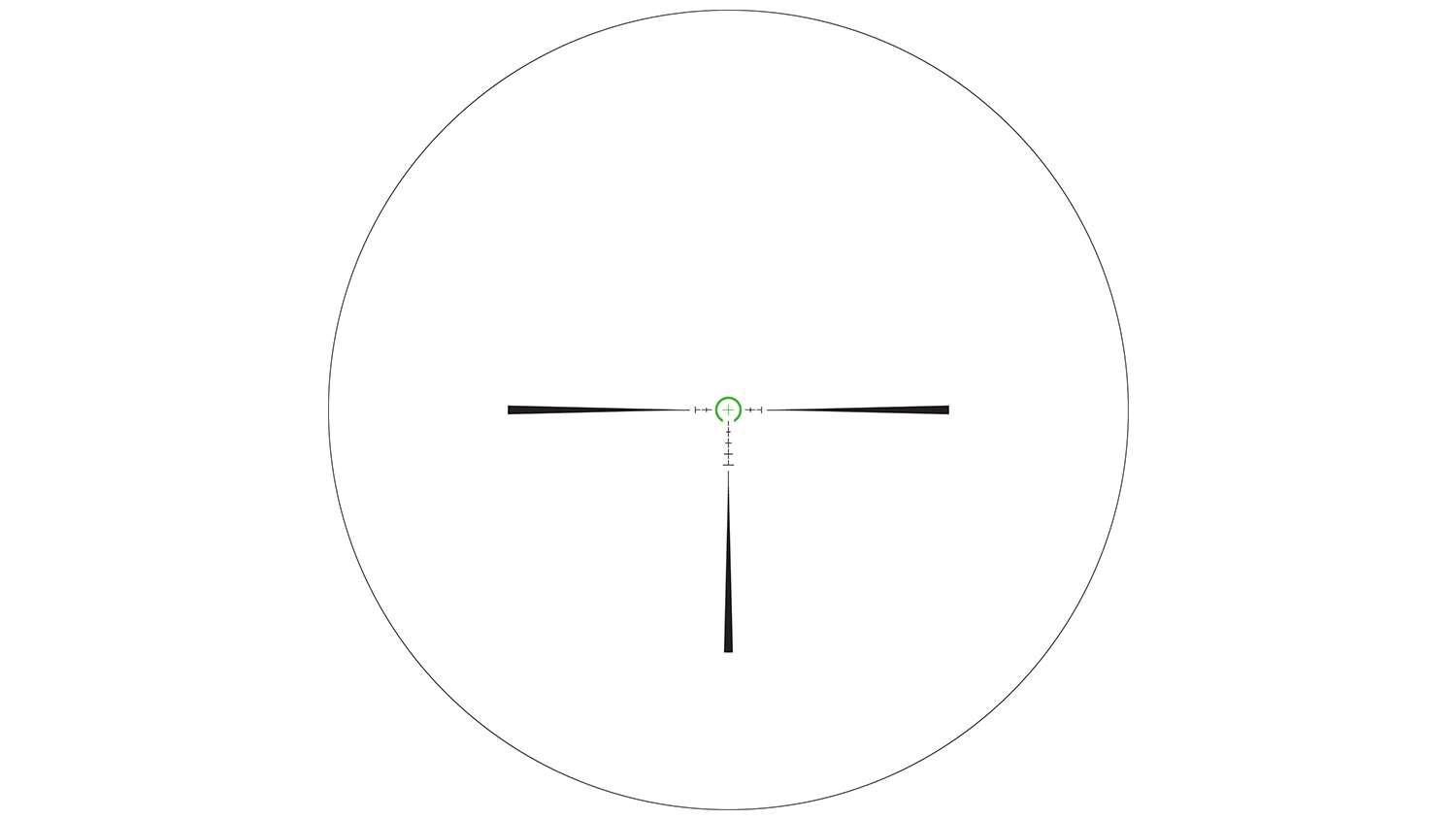
The horseshoe and cross reticle center illuminate by turning the rheostat control, which also houses the common CR2032 coin battery, mounted obliquely on the ocular lens end of the scope. The reticle lights up green in 10 one-step increments of luminosity, and was welcome on a cloudy morning of spring rains when shooting on the 600-yard target.
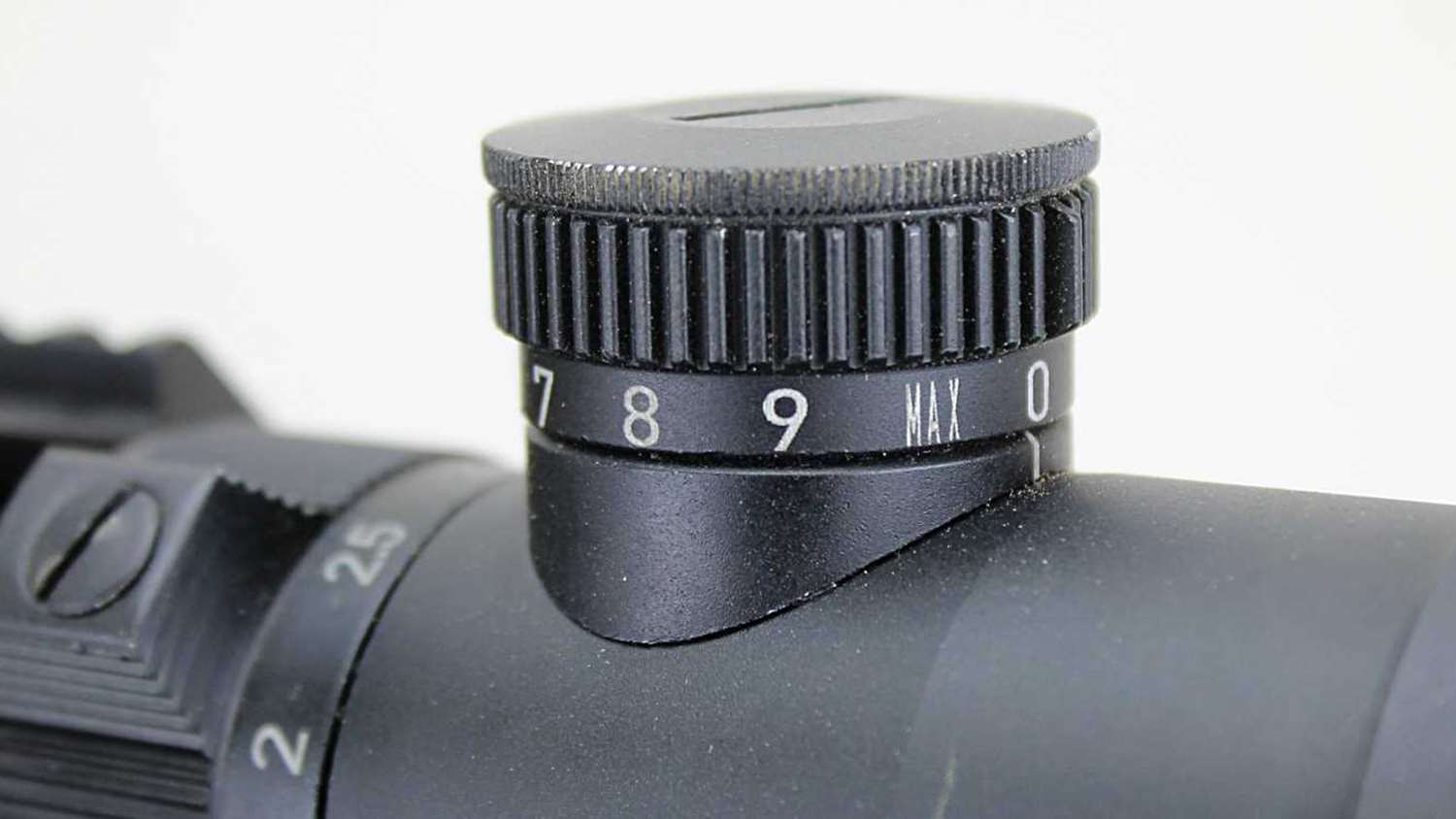
Hash marks on the horizontal and vertical stadia are spaced 5 MOA apart. Such hash marks are aids for determining range to a target in tactical or hunting situations, but we already know the distance to our target in High Power, so I found no practical utility in them.
That critique aside, the major elements of the reticle work very well together. The tapering stadia lead the eye toward the center and give some indication of cant, the horseshoe provides an aiming reference reminiscent of front and rear aperture sights, and the 5 MOA cross offers a precision alignment. The 5 MOA center cross earns an enthusiastic, “Oh yeah!” for being an eminently useful bit of cleverness. In concert with the horseshoe, it makes an excellent sight picture.
Parallax adjustment
As the scope’s model designation suggests, it has a 1-4x variable magnification, which is easily adjusted via a large protrusion on the ring just forward of the ocular lens. Settings are clearly marked.
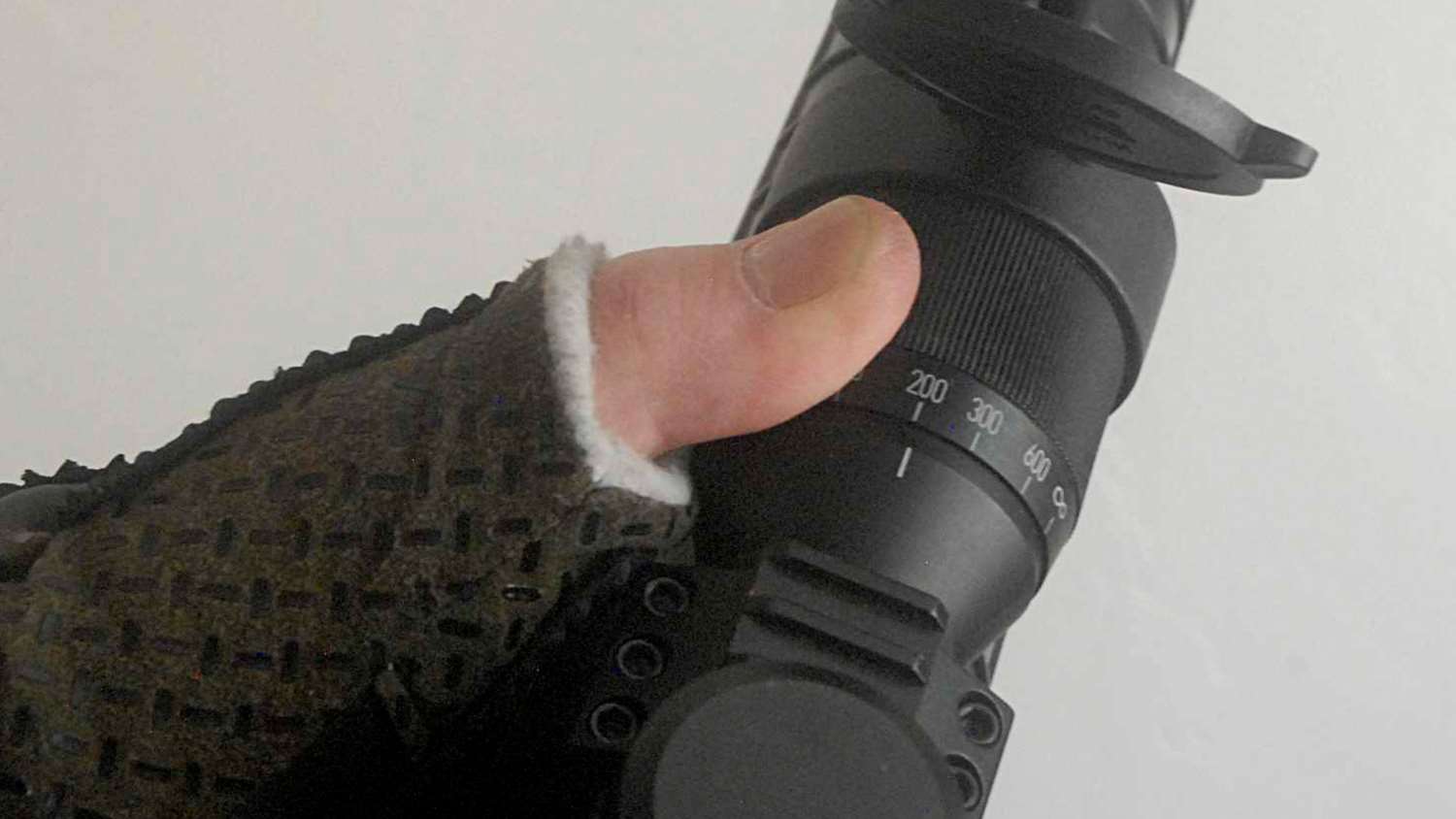
While scope parallax isn’t that big a deal in short range applications, when we’re trying to pile a string of shots into an X-ring across a split of 200 to 600 yards, an adjustable parallax becomes very desirable. Competitors have several jury-rig solutions for fixed parallax scopes, but the XTC features a parallax adjustment at its objective end with yardages marked off at 15, 20, 40, 100, 200, 300 and 600 yards. The yardage marks on the parallax adjustment aren’t readily visible without dismounting the rifle from the shoulder, but that really isn’t much of an issue, as we’ll set the parallax when we step up to the firing line and leave it until we move back. On the scope tested here, parallax adjustment is easy to spin with the thumb of the support hand.
Turret adjustments
To find optical center on any scope we turn the adjustment knob right or left until it stops, then count clicks as we turn it fully in the other direction. When it stops, divide the number of counted clicks by two; rotate the knob back in the opposite direction that number of clicks to stop at optical center.
On the XTC, the elevation knob moved 1,266 clicks from full left to full right; divided by four (¼ MOA clicks) makes 316.5 MOA, or 158.25 MOA up and 158.25 MOA down, with optical center at 633 clicks from full up or down.
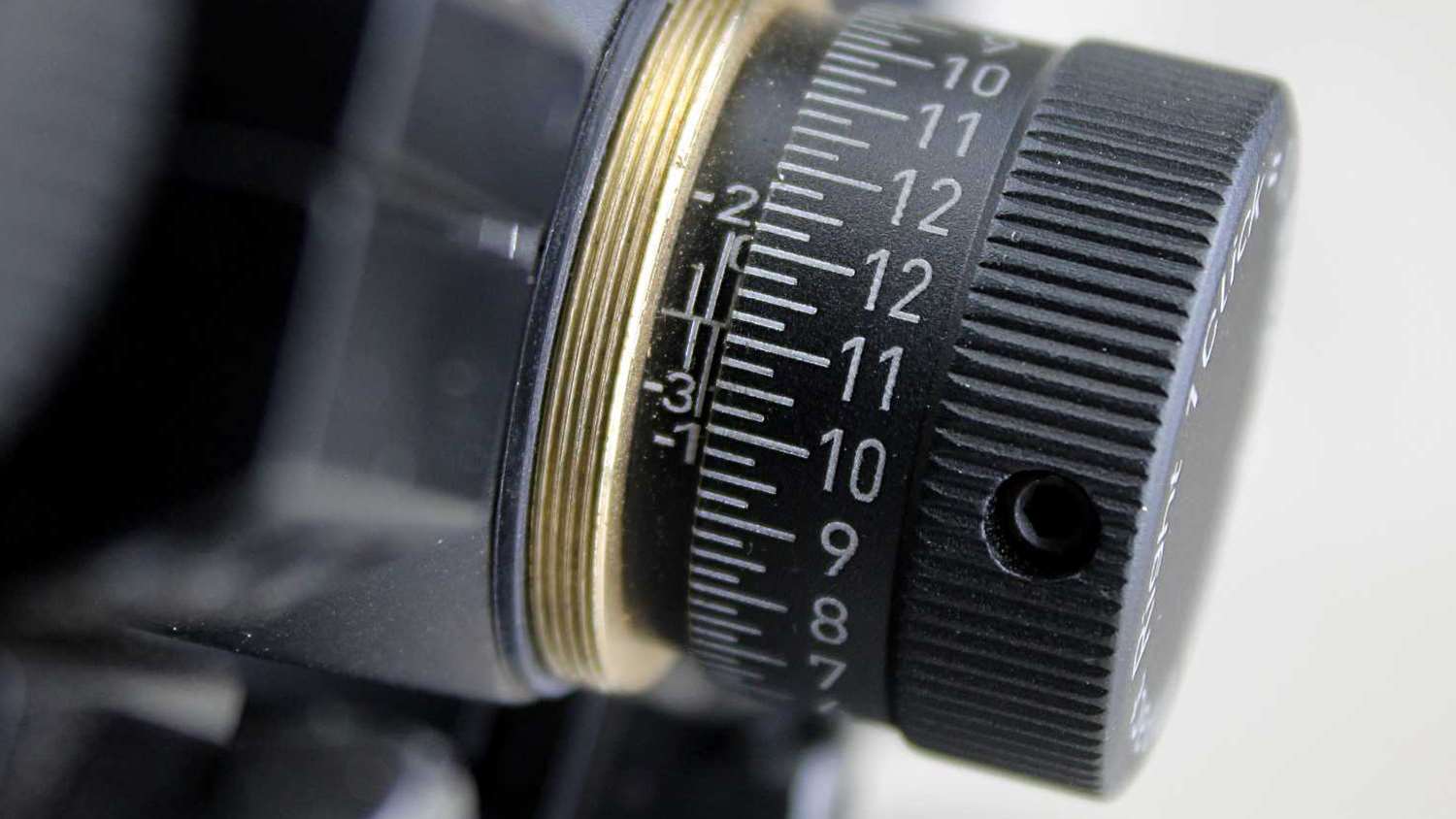
The windage knob didn’t travel quite as far, 1,204 clicks, equating to 301 MOA or 150.5 MOA right and 150.5 MOA left windage available from optical center (602 clicks from full right). I might have gotten a few more clicks out of it, but the instruction booklet rightfully cautions against trying to force the adjustment knobs to their stops. As it was, the windage knob’s resistance to turning increased significantly about halfway between center and full right.
After finding optical center, loosen the knob’s three set screws to rotate the knob so that the “0” (zero) on the scale lines up with the centerline on the turret. After you’ve done this, the reference lines on the turret indicate how many full turns you’ve put on the adjuster. For example, from optical center “0” (zero), one full 360 degree turn of the elevation adjustment knob downward places the bottom edge of the knob on the “-1” reference line.
The reference marks on the knobs each mark off ¼ MOA; the numerals indicate one full MOA. One full 360 degree rotation of the knob moves elevation or windage 25 MOA, which is 100 clicks. You can use this knowledge to help alleviate some of the tedious counting when finding optical center.
The instruction book leaves a bit to be desired. The paragraphs explaining adjustments first use inches, MOA and yards, then switches to centimeters, mRads and meters. Designing and building the scope for competition based on Imperial yardage and then suddenly explaining in metric to explain the “how-to” is not only odd, it is likely confusing to many.
Collapsing stocks
With the scope fastened to a cantilevered Millett M4 riser Picatinny rail, and that fastened to a new White Oak Armament flat top upper, I brought the rig to my gun club’s 100-yard range for preliminaries. Long story short, by day’s end I concluded that eye relief is probably the biggest issue with scopes for Service Rifle competition. Shooting the XTC throughout the Spring 2018 High Power season reaffirmed that impression.
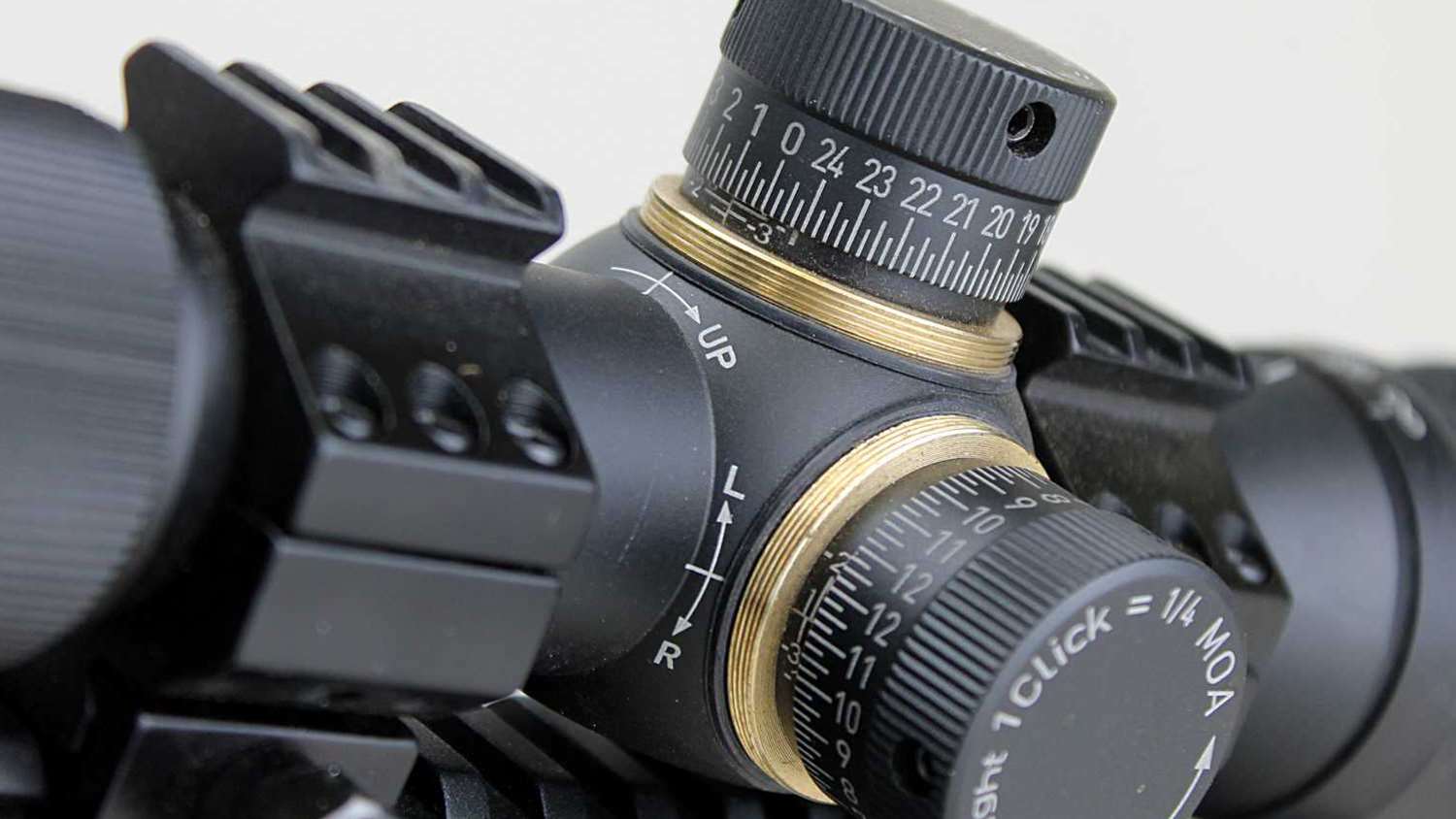
The problem is that eye relief on the XTC (and most standard rifle scopes) is fixed at about 3½ inches and cannot offer the proper eye relief for both offhand and prone shooting because cheek placement on the stock (for myself and many others, anyway) is not the same in both positions. In offhand, the cheek rests further back along the comb than when shooting prone. Even with the scope a wee bit too far forward for perfect eye relief in offhand, when shooting prone the scope is still too close. When mounted too far forward and with the eye subsequently too far back, of course, a black ring appears around the ocular lens edges, constricting vision to a small point in the center. When mounted too far back and too close to the eye, the sight picture disappears completely.
The fix is to mount the scope so that the ocular lens is positioned over the trigger, and then mount a collapsible buttstock adjustable for length—which is why the new rule permitting collapsible buttstocks accompanies the new rule permitting optics. I haven’t yet found a collapsible that works 100 percent with the XTC to give me perfect eye relief for a relaxed cheek weld in all positions, especially in the sitting position.
If you have experience with collapsibles, you know that most such length-adjustable buttstocks don’t lock up tightly, allowing slop and wriggle that isn’t conducive to X-ring shots. One exception is the Magpul UBR buttstock, which is becoming a favorite of competitors going to scopes (the UBR is now in Gen 2). The Rock River Arms collapsible is a fair second choice; though it doesn’t lock up rock-solid, it has almost no movement at all. Both accept only the large, push button style QD sling swivel; because NRA High Power rules require the sling be on the rifle in the offhand stage, you’ll need one of those.
Cost of glass
The XTC’s 34 mm diameter objective lens is the largest permitted by rules. Though the objective lens size and lens coatings, not the tube diameter, determines light transmission, the XTC’s 30 mm tube provides the scope a bit of rugged beefiness in likely having thicker walls, assuming internal lenses of the same diameter as those found in 1-inch tubes.
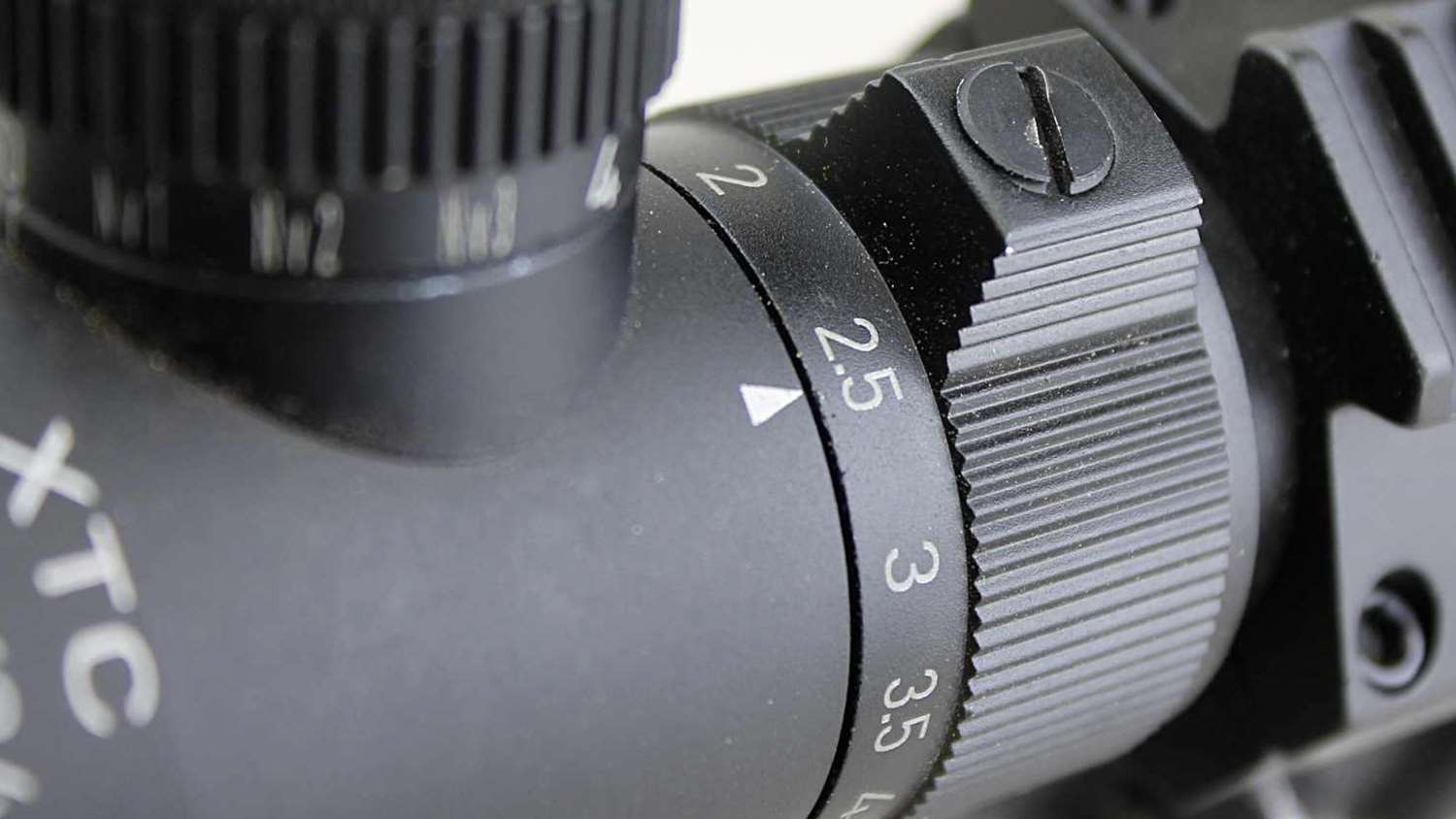
The advantage to shooting a scope is, obviously, in gaining a more precise sight picture which, in turn, can hardly help but to raise personal scores. There are downsides, especially in the significantly elevated cost of the scope, cantilever mount, appropriate upper receiver and collapsible buttstock. High end scopes like those from Nightforce and March can alone exceed the cost of the Service Rifle itself.
Scopes require extra care in handling. We must remember to replace turret caps before coming off the line to prevent inadvertent movement of the settings as we move back, and remember to reset parallax and magnification as needed. We must be careful when laying the rifle down to not damage the windage knob on the right side and, in the case of the XTC, the rheostat angled on the left. Lenses need careful dusting, cleaning and covers. If you depend on the lighted reticle feature, you’ll want to keep extra batteries on hand. As well, it will take some time and experience to adjust to shooting a scope from the various positions.
In the final analysis, each shooter must balance the pros and cons to determine whether he or she will give up irons to go the optical route. If you do, at this time the Hi-Lux XTC 1-4x34 mm has all the features High Power shooters want at the lowest price point among scopes that do.
MSRP for the Hi-Lux XTC1-4x34 mm is $475. See the manufacturer’s website at hi-luxoptics.com

































